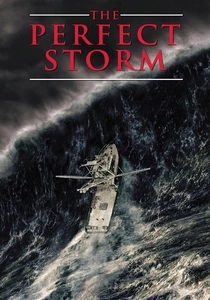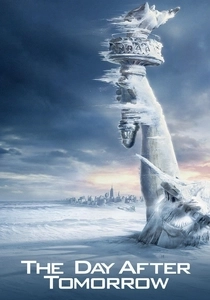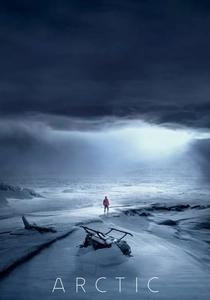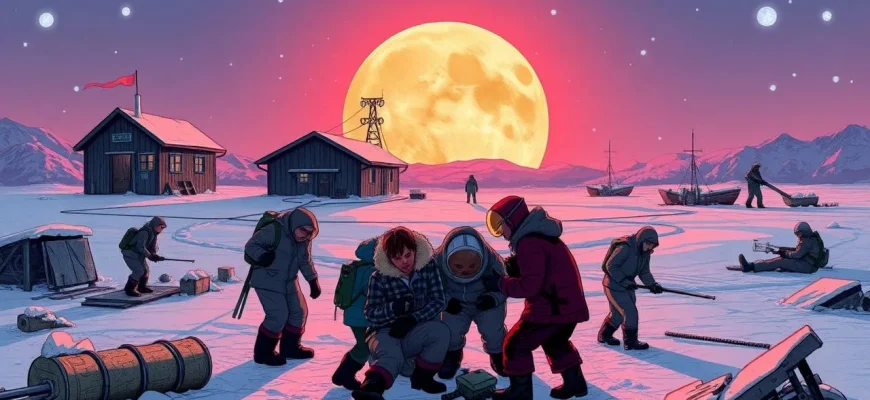Polar stations, isolated and often battling extreme weather conditions, provide a perfect backdrop for disaster films. These movies not only showcase the harshness of nature but also the resilience of the human spirit. Here are 10 films that capture the essence of survival in some of the most inhospitable environments on Earth.

The Thing (1982)
Description: While not strictly a disaster film, "The Thing" involves a group of researchers at an Antarctic research station dealing with an alien life form that can perfectly mimic any living organism. The isolation and cold add to the horror and tension.
Fact: The film was a remake of the 1951 film "The Thing from Another World" and has since become a cult classic, known for its practical effects and chilling atmosphere.
 Watch Now
Watch Now 
DeepStar Six (1989)
Description: Although set underwater, this film shares themes of isolation and disaster with polar station movies, as a crew at an underwater research facility faces a mysterious threat.
Fact: The film was one of several underwater-themed movies released in the late '80s, competing with "The Abyss" and "Leviathan."
 Watch Now
Watch Now 
The Perfect Storm (2000)
Description: While not directly about a polar station, this film includes scenes where the crew of the Andrea Gail must navigate through a storm that could have originated from polar regions, showcasing the power of nature.
Fact: The film is based on the book by Sebastian Junger, detailing the real-life events of the 1991 Perfect Storm.
 Watch Now
Watch Now 
The Day After Tomorrow (2004)
Description: This blockbuster film features a sudden global weather shift that plunges the world into a new ice age, with a group of survivors taking refuge in a New York library. The polar station scenes are pivotal, showcasing the initial signs of the catastrophic climate change.
Fact: The film was inspired by the book "The Coming Global Superstorm" by Art Bell and Whitley Strieber. It was one of the first major films to address climate change in a dramatic fashion.
 Watch Now
Watch Now 
Whiteout (2009)
Description: Set in Antarctica, this thriller follows a U.S. Marshal investigating a murder at a remote research station just as a massive storm hits, isolating her and the suspects in a deadly game of cat and mouse.
Fact: The film was based on the graphic novel of the same name by Greg Rucka and Steve Lieber. It was shot in Manitoba, Canada, to simulate the Antarctic environment.
 Watch Now
Watch Now 
The Colony (2013)
Description: In a post-apocalyptic world, survivors live in underground bunkers, but one group ventures out into the frozen wasteland to find supplies, encountering dangers reminiscent of polar station isolation.
Fact: The film was shot in Toronto, with sets designed to mimic the harsh, icy conditions of a frozen Earth.
 Watch Now
Watch Now 
The Grey (2011)
Description: After a plane crash in the Alaskan wilderness, survivors must contend with the elements and a pack of wolves. The film's setting and survival theme echo the isolation of polar stations.
Fact: The film was inspired by the short story "Ghost Walker" by Ian MacKenzie Jeffers, and much of the film was shot in British Columbia, Canada.
 Watch Now
Watch Now 
The Finest Hours (2016)
Description: Although primarily a sea rescue film, it includes scenes at a polar station where the Coast Guard crew must brave the elements to save survivors from a tanker split in two by a storm.
Fact: The film is based on the true story of the 1952 SS Pendleton rescue, one of the most daring small boat rescues in Coast Guard history.
 Watch Now
Watch Now 
Arctic (2018)
Description: While not set at a research station, "Arctic" captures the essence of survival in polar conditions. A man stranded in the Arctic after a plane crash must navigate the harsh environment to find rescue.
Fact: The film was shot in Iceland, with minimal dialogue, focusing on the protagonist's struggle against nature.
 Watch Now
Watch Now 
Eight Below (2006)
Description: This heartwarming tale involves a group of sled dogs left behind at a polar station in Antarctica. The film focuses on their struggle to survive and the efforts to rescue them.
Fact: The film is loosely based on the true story of the 1958 Japanese expedition to Antarctica, where 15 sled dogs were left behind.
 Watch Now
Watch Now 








